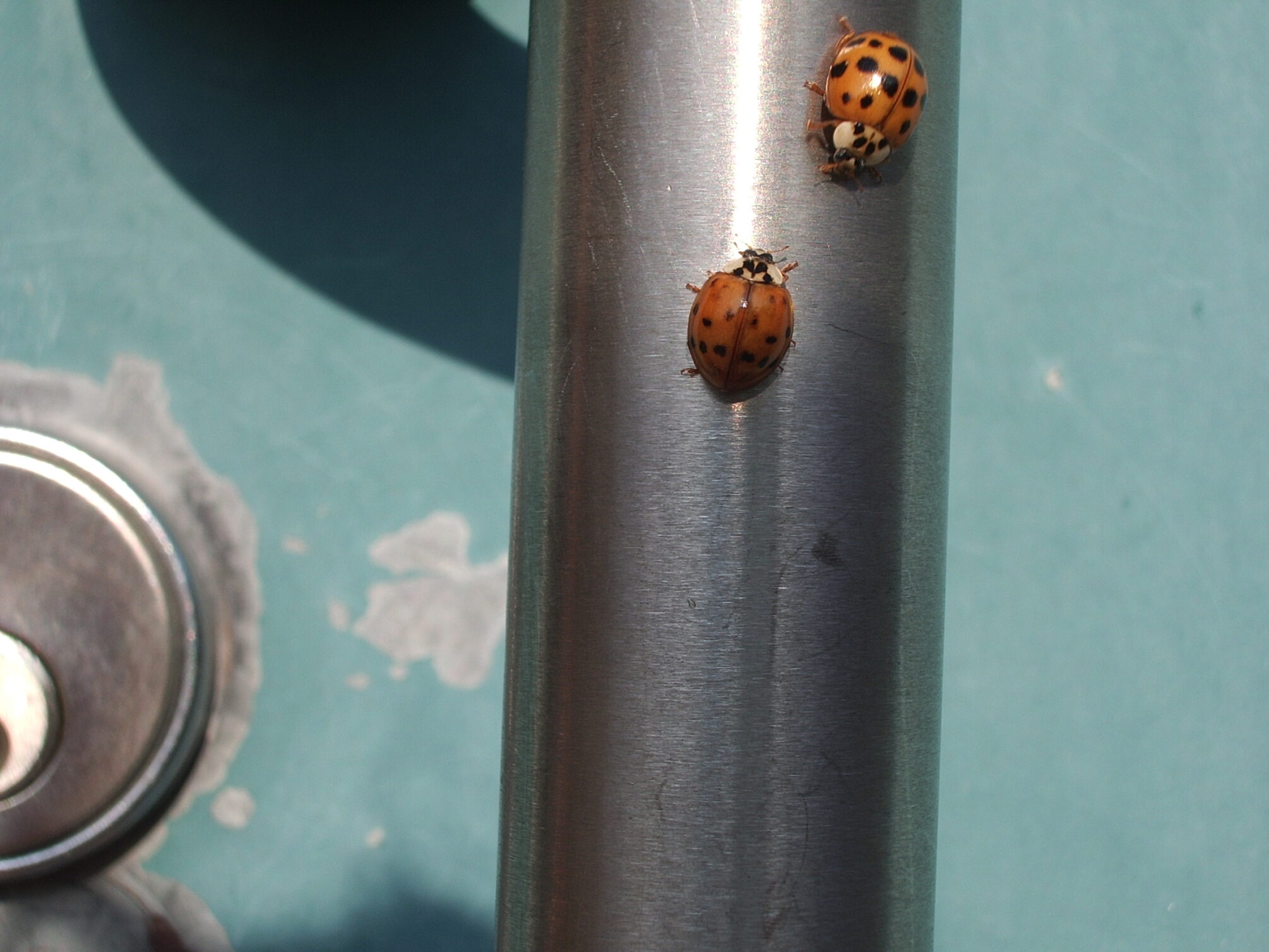Novel analyses of a 31-year dataset on invading ladybeetles shows that small differences in habitat preference across years allow for two similar invading species to coexist while native species decline.
By Isabela Lima Borges, graduate student at Michigan State University and the KBS LTER

Credit: KBS LTER, CC BY-SA 4.0.
Invasive species lead to novel interactions
Invasive species are one of the main threats to biodiversity in an increasingly interconnected world. As humans move organisms around, either purposefully or incidentally, new combinations of species have the opportunity to interact with one another. These novel interactions have the potential to affect an invader’s persistence in the environment and determine how harmful invaders are to native species. At the Kellogg Biological Station (KBS) LTER site in southwest Michigan, two ladybeetles initially introduced in the American South as biocontrol have spread and established, to the detriment of native species.
The first invading species, Coccinella septempunctata, arrived at KBS around 1985, with the other, Harmonia axyridis, following in 1994. Native to Asia and Europe, the introduced populations did not share an evolutionary history of coexistence, but nevertheless were able to persist together. A study at KBS monitoring ladybeetles had just been started in 1989 to observe the diversity and abundance of both native and invasive species across years. “We were able to capture the establishment of both invasive species and that’s really lucky and really unique,” said Dr. Christie Bahlai of Kent State University, who has worked on this dataset for a decade. More than 30 years since the start of the study, a new publication in Ecology led by Dr. Bahlai reports how this long-term dataset can help us understand coexistence between invading species.
From theory to experiments to observation
Dr. Bahlai led a team of graduate students in answering a fundamental question about these species: How are two similar invaders able to coexist in a new shared environment? Ecological theory poses that species can only coexist if they have differences in what they require and how they respond to their environments. Without any differences, identical species will eventually exclude one another through competition or chance. This is particularly relevant when it comes to invading species, with some being capable of completely excluding similar native organisms from a community.
The new Ecology paper, “Coexistence between similar invaders: The case of two cosmopolitan exotic insects,” found that one of the species, H. axyridis, has broad habitat and abiotic preferences, doing fine across most sampled habitats in most years. C. septempunctata, on the other hand, does better under more specific ecological conditions. “[H. axyridis] is probably a super invader that can handle a pretty wide variety of conditions but is equally ‘meh’ towards them. And then we have [C. septempunctata] that is a little bit more ‘Goldilocks’ in their environmental preference. Turns out that kind of works [for coexistence]!” summarized Dr. Bahlai.

Credit: Dr. Christie Bahlai, CC BY-SA 4.0.
These small differences are impossible to study through experiments alone. When doing so, researchers need to flatten environmental variability to focus on specific aspects of an interaction: How good is one species at eating another? Do they show differences in heat or cold tolerance? Some such studies of H. axyridis and C. septempunctata exist, but it is difficult to make conclusions about their persistence in complex environments when examining individual variables. “When we see these individual interactions in the petri dish or the mesocosm it’s really hard to say how that’s going to translate to the population scale” said Dr. Bahlai. In nature, all aspects of an interaction are integrated, making the outcome of these interactions a multi-dimensional problem.
That is where LTER long term observational data comes in. For more than 30 years, KBS scientists collected weekly data on the presence and abundance of all ladybeetles in different agricultural treatments, along with fine-scale environmental data such as temperature and precipitation. “It’s really hard to think of any other experiment that would provide a dataset that would as clearly test this idea as this […] because we have such a long term picture we can see what is the natural variation in the population and what are the actual interactions that are happening” says Dr. Bahlai.
A mighty dataset sheds light on a tiny world
The size and complexity of the dataset provided its own challenges. Dr. Bahlai saw her Reproducible Quantitative Methods class as the perfect avenue to dive into the problem, and students from the course make up the first nine of the Ecology paper’s authors. “Stats classes are usually about ‘Okay, we know exactly what we’re going to do with this data, so let’s do that.’ [Reproducible Quantitative Methods] is more of the ‘Okay, now what?’ kind of class, where we let the data lead us” described Dr. Bahlai. By delving into how ladybeetle abundances change in response to various environmental variables measured in the LTER, they were able to tease apart the differences between species that allow for both to persist at KBS.
As the ladybeetle dataset continues to expand, the next steps in this research may uncover how the persistence of the invasive insects affects native ladybeetles. Declines of native ladybugs have been noted throughout the years, and understanding the ecological mechanisms through which H. axyridis and C. septempunctata coexist could shed new light on the invasives’ role in driving out native species. As Dr. Bahlai concluded, “I feel like the LTER is such an important resource for this type of research. We didn’t know we would capture this when they set out these experiments. […] We have such a robust test of ecological theory here even in data that wasn’t necessarily set up for this specific hypothesis.”










